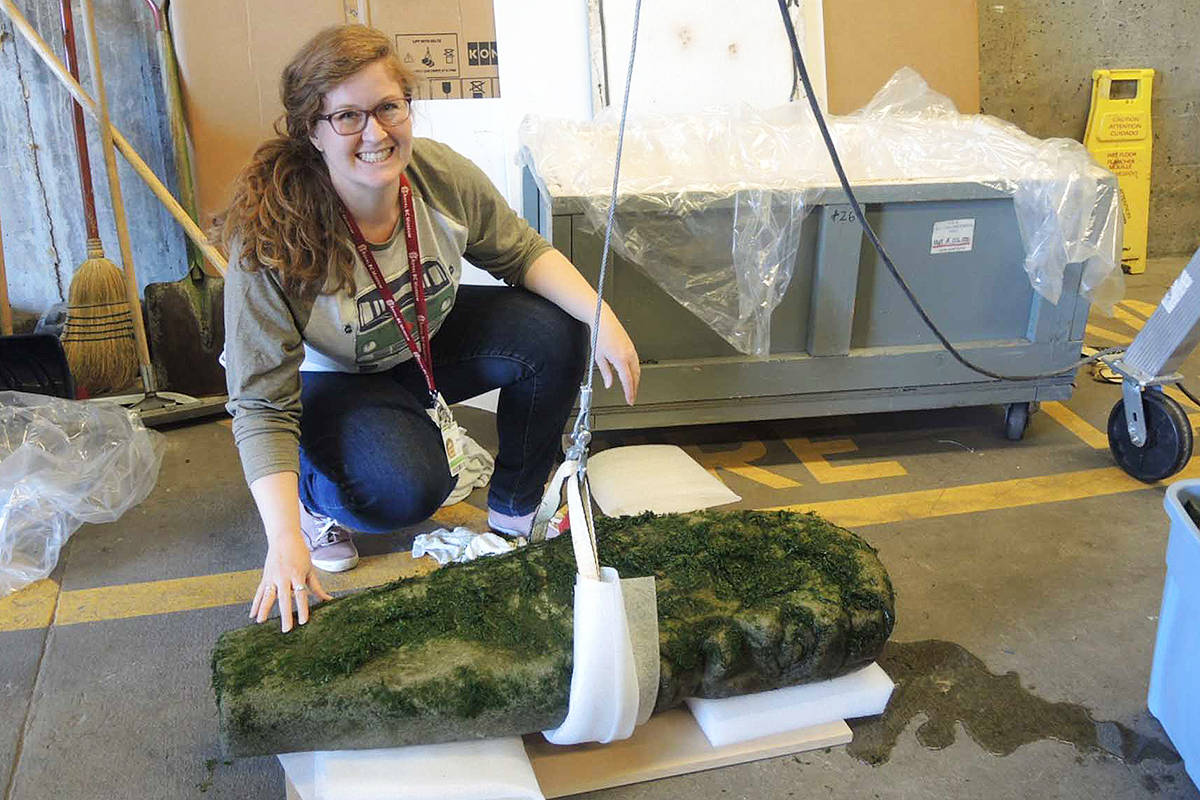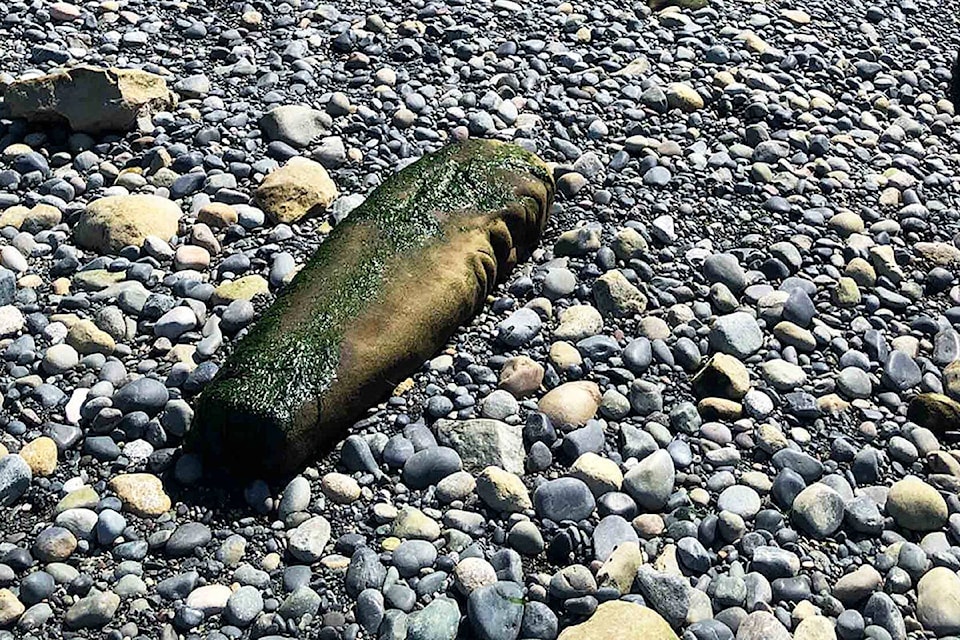A 100-kilogram carved sandstone pillar, discovered by a person walking along the Dallas Road beach at low tide last summer, is an Indigenous artifact, according to Royal B.C. Museum curatorial staff.
Having thoroughly examined the find, consulted with Indigenous leaders and delved into anthropological records of the area, RBCM curator of archaeology Grant Keddie believes it to be a Lekwungen ritual stone pillar, used for such ceremonies as celebrating the first salmon, puberty rites or feeding of the dead.
The significance of the artifact as part of local First Nations history, and the subsequent research into its use and meaning has Indigenous leaders excited.
| This stone pillar discovered on the beach at Dallas Road has been taken into care by conservators at the Royal B.C. Museum. Curatorial staff at the museum are working with Songhees and Esquimalt Nation representatives to determine its use as a cultural stone or marker by Indigenous peoples in the area. Photo by Bernhard Spalteholz |
In a release, Chief Ron Sam of the Songhees Nation called the news a “clear reminder of the long history of our people living in this region.”
He looks forward to learning more about the stone’s history and use, while Chief Rob Thomas of Esquimalt Nation voiced excitement about the potential for finding similar stones in the beach area.
“Our hope is future discoveries may tell a fuller story of the stone’s history,” Thomas said.
RELATED STORY: New branch of Royal BC Museum to be built in Colwood
Keddie helped recover the artifact from the beach on July 16, 2020 four days after resident Bernhard Spalteholz photographed it at low tide on the rocky beach between Clover Point and Finlayson Point and informed the RBCM.
In his online blog about the find, Keddie recalled an article he wrote in 2012 that referred to “cultural stones,” the presence of which was described to anthropologist Franz Boas in the 1880s by a Lekwungen elder. One location recorded by Boas was “not far” from gun batteries at Finlayson Point in Beacon Hill Park.
“This newly discovered artifact could be the very one mentioned by Lekwungen elders,” Keddie wrote. “The location is correct and it’s clear at some point in the past a large section of the cliff has slumped into the ocean above where the stone was found. I have also wondered why this stone had not been found before.”
The four-day lag between the RBCM being informed of the stone’s location by Spalteholz, and its retrieval, provides a clue. Keddie wrote that the stone was only visible at extremely low tide, and even on the day it was recovered, was submersed.
With the stone cleaned and being stored at the museum, discussions are underway with the Esquimalt and Songhees nations to come up with a suitable final home for the artifact.
ALSO READ: Songhees Nation to open two Victoria cannabis stores spring 2021
Do you have a story tip? Email:don.descoteau@blackpress.ca. Follow us on Instagram. Like us on Facebook and follow us on Twitter.

